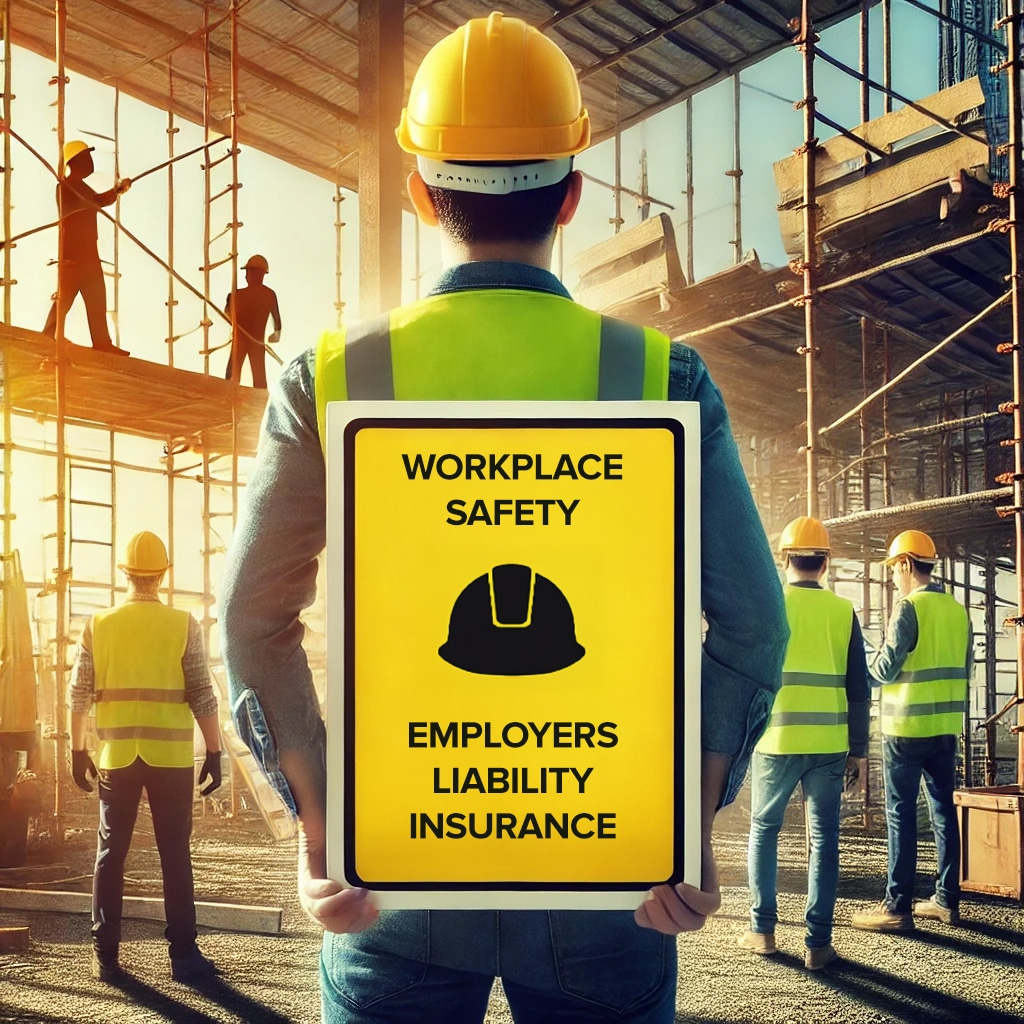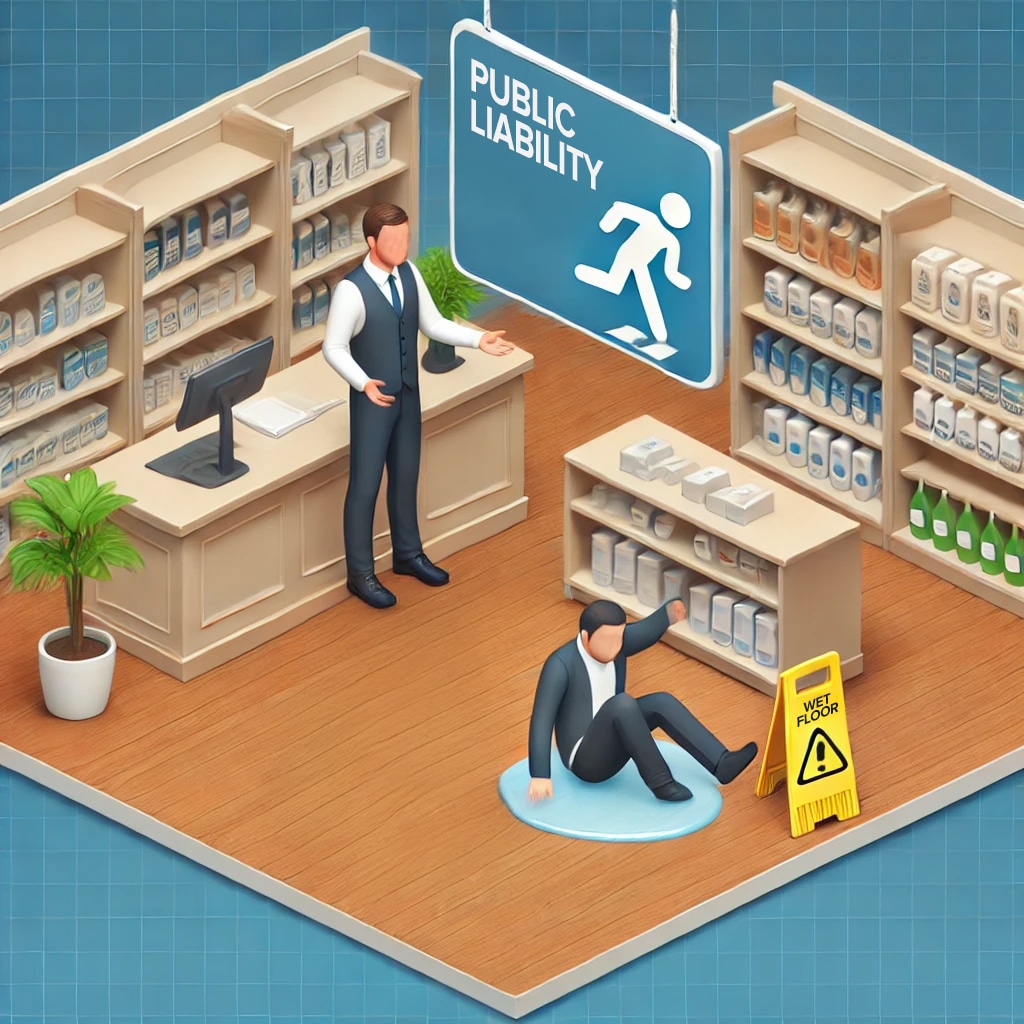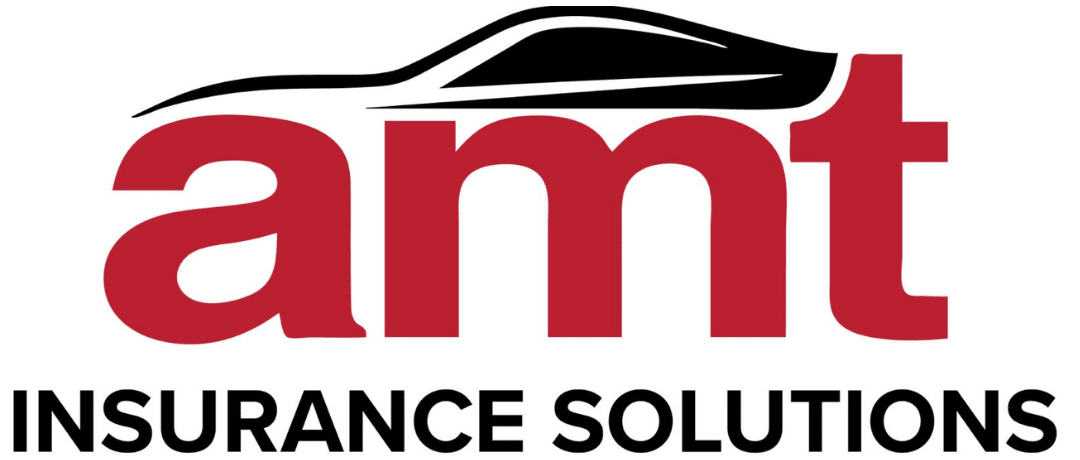Liability insurance is a cornerstone of business risk management, offering financial protection against claims and legal actions. While both public liability and employers’ liability insurance play a crucial role, they serve different purposes and cover distinct risks. Public liability insurance safeguards businesses against claims from third parties, whereas employers’ liability insurance is designed to protect against claims from employees.
Understanding the differences is essential to ensure your business is adequately covered. In this blog, we’ll break down the distinctions, explain their legal requirements, and help you determine why your business might need both.
What Is Public Liability Insurance?
Public liability insurance is a policy designed to protect businesses from claims made by third parties, including customers, clients, or members of the public. It covers costs arising from injuries or property damage caused by the business’s activities. For instance, if a customer slips on a wet floor at your premises and sustains an injury, public liability insurance would help cover the legal fees and compensation costs.
This type of insurance is not legally required in the UK but is highly recommended for businesses that interact with the public, either on their premises or offsite. Many clients or contractors also require proof of public liability insurance before engaging in business.
Key Features of Public Liability Insurance
Covers third-party personal injury and property damage claims.
Protects businesses in a variety of industries, from small businesses to construction.
Often required for public-facing businesses, such as shops or event planners.
By safeguarding your business against unexpected claims, public liability insurance ensures you can focus on growth without the looming fear of costly lawsuits.
What Is Employers’ Liability Insurance?

Employers’ liability insurance is a mandatory policy for most businesses in the UK that employ staff. It protects against claims made by employees who suffer work-related injuries or illnesses. This coverage is essential to ensure that businesses can handle the financial and legal consequences of such claims.
For example, if an employee develops repetitive strain injury due to inadequate equipment or slips in the workplace, employers’ liability insurance would cover compensation costs and legal fees.
Legal Requirements in the UK:
Under the Employers’ Liability (Compulsory Insurance) Act 1969, businesses in the UK with employees must have at least £5 million in employers’ liability insurance coverage.
However there is an exception to this. Employers Liability isn’t needed if the business is in the public sector, run by a sole employee or if the employees are close family and friends.
Non-compliance can result in hefty fines, up to £2,500 per day.
What Does It Cover?
Employee injury or illness directly caused by their work environment or duties.
Legal costs incurred if an employee takes the business to court.
Compensation for physical injuries, mental health issues, or illnesses caused at work.
Employers’ liability insurance ensures that businesses meet their legal obligations and maintain financial stability even in the face of employee claims.
Key Differences Between Public and Employers’ Liability Insurance
While public liability and employers’ liability insurance share the goal of protecting businesses, they cater to distinct groups and situations. Understanding these differences helps businesses ensure they have the right coverage for their unique needs.
| Public Liability | Employer Liability | |
| Who is covered? | Protects against claims from third parties, such as customers, clients, or the general public. | Covers claims made by employees or former employees. |
| Legal requirements | Not legally mandatory in the UK but often required by contractors or clients. | Legally required for businesses with employees under the Employers’ Liability (Compulsory Insurance) Act 1969. |
| Typical claims | Examples include a customer tripping over a misplaced sign or damage to a client’s property caused by your business operations. | Includes workplace accidents, such as an employee falling from scaffolding, or illnesses resulting from prolonged exposure to hazardous conditions. |
| Policy Costs | Public liability insurance premiums are influenced by the level of public interaction and the nature of business activities.
|
Employers’ liability premiums depend on the number of employees, the industry, and workplace safety measures in place.
|
| Documentation and Compliance | There are no such legal requirements for public liability insurance. | Employers must display an Employers’ Liability Insurance Certificate, either physically or digitally, to comply with the law.
|
By comparing these critical factors, businesses can identify gaps in coverage and understand why they might need one or both policies.
Legal Requirements and Implications
Navigating the legal requirements of liability insurance is crucial for businesses to avoid penalties and ensure compliance.
Here’s what you need to know about the legal aspects of public and employers’ liability insurance in the UK:
Why Your Business Might Need Both Insurances
While public liability and employers’ liability insurance serve different purposes, many businesses benefit from having both policies. Together, they offer comprehensive protection against a wide range of risks, ensuring that your business is safeguarded from potential financial and legal challenges.
Covering All Potential Claims:
Public liability insurance covers claims from third parties, such as clients or members of the public.
Employers’ liability insurance protects against claims made by employees for work-related injuries or illnesses.
Having both ensures your business is prepared for claims from both external and internal parties.
Contractors and Tradesman often require proof of public liability insurance before signing contracts. Similarly, having employers’ liability insurance demonstrates compliance with legal obligations, boosting your credibility.
Protecting Financial Stability:
Without these insurances, a single claim could lead to crippling legal fees and compensation payouts. For example:
A public liability claim for property damage caused by your business activities.
An employers’ liability claim for an employee injured due to inadequate safety measures.
Both scenarios could lead to substantial costs that insurance would otherwise cover.
Businesses operating in industries like construction, retail, or hospitality often interact with the public and employ staff. These dual interactions necessitate both types of insurance to address the unique risks associated with each group.
How to Choose the Right Coverage for Your Business
Selecting the right liability insurance coverage depends on the nature of your business, the risks you face, and the legal obligations you must meet. Here’s how to assess your needs and make informed decisions:
Assess Your Business Activities:
If your business interacts frequently with the public or operates in public spaces, public liability insurance is essential.
If you employ staff, employers’ liability insurance is legally required and critical for protecting against employee-related claims.
Identify Potential Risks

Analyse scenarios where accidents or damage could occur. For instance:
A shop owner needs public liability insurance in case a ceiling light falls on a customer.
A construction company requires employers’ liability insurance to protect against on-site employee injuries.
Consider Industry Requirements:
Some industries have specific expectations for liability insurance. For example, event organisers or contractors often require higher levels of public liability coverage due to increased risks.
Determine Appropriate Coverage Levels:
Public liability insurance: Coverage limits typically range from £1 million to £10 million, depending on your industry and business size.
Employers’ liability insurance: A minimum of £5 million is required by law, however it’s common for insurance companies to provide £10 million.
Factor in Client and Contractor Expectations:
Many clients and contractors won’t work with businesses that lack sufficient public liability insurance. Ensure your policy meets these expectations to avoid losing potential contracts.
Seek Professional Advice:
Consult insurance brokers such as AMT Insurance Solutions to ensure you fully understand your obligations and risks. They can help tailor policies to suit your business’s unique needs.
Choosing the right mix of public and employers’ liability insurance not only protects your business but also boosts your professional credibility. By evaluating risks and understanding requirements, you can build a policy that provides robust coverage.
Understanding the distinctions between public liability and employers’ liability insurance is crucial for any business owner. Both policies offer essential protection but cater to different aspects of your operations, covering different risks and types of claims. While public liability insurance safeguards against third-party claims, employers’ liability insurance ensures compliance with legal requirements and protects against employee-related claims.
By carefully considering your business’s unique needs—such as industry type, employee count, and public interaction, you can determine whether you need one or both of these insurances. Having both policies in place provides comprehensive coverage, protects your financial stability, and demonstrates your commitment to safety and professionalism.
Remember that insurance isn’t just about meeting legal obligations; it’s about proactively managing risk and ensuring that your business can continue to thrive even in the face of unforeseen challenges. Whether you’re running a small business or a large corporation, securing adequate liability insurance is an investment in the future of your business.
Take Action Now:
If you haven’t already, evaluate your current insurance policies to ensure you have the right coverage.
Consult with an insurance broker like AMT Insurance Solutions to get tailored advice for your business needs.
Protect your business, employees, and clients by securing the right type of liability insurance today.
By understanding and managing your liability insurance needs effectively, you ensure that your business is not only compliant but also well-equipped to handle any challenges that may arise.

